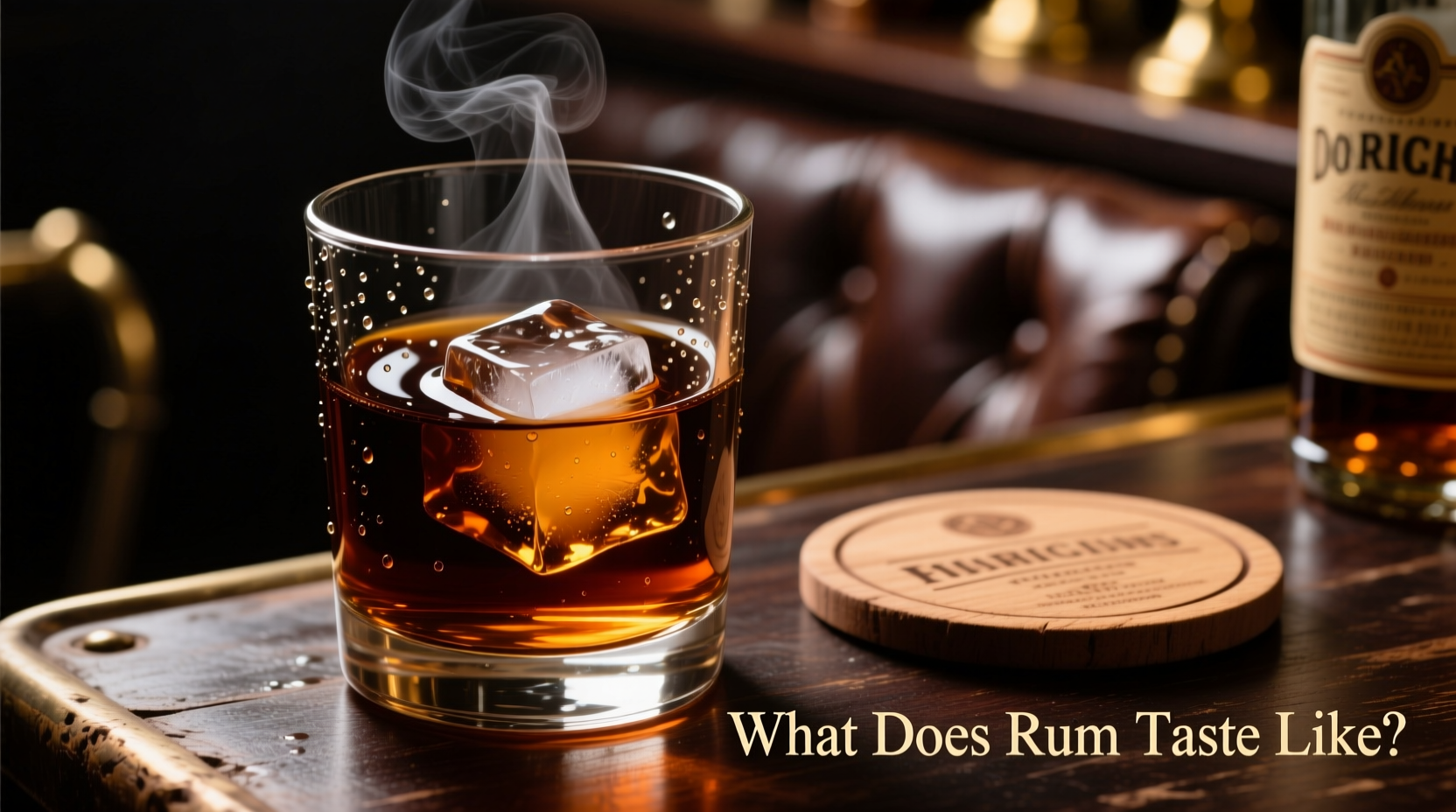Understanding rum's flavor profile unlocks a world of tasting possibilities whether you're sipping it neat, mixing cocktails, or exploring global spirit traditions. This guide breaks down exactly what to expect from different rum varieties based on scientific production factors and sensory analysis.
Why Rum Tastes the Way It Does: The Flavor Foundation
Rum's distinctive taste originates from three critical production elements: the base ingredient (sugarcane juice or molasses), fermentation process, and aging method. Unlike spirits made from grains, rum's sugarcane foundation creates naturally sweet characteristics that evolve through careful distillation and barrel aging.
During fermentation, yeast converts sugarcane sugars into alcohol while producing esters—chemical compounds responsible for fruity aromas. Longer fermentation times increase ester production, explaining why Jamaican rums often showcase pronounced banana and pineapple notes compared to cleaner-tasting Cuban varieties.
Rum Flavor Profiles Compared: Type-by-Type Analysis
Understanding the differences between rum categories helps set accurate taste expectations. This verified comparison draws from the International Rum Conference's 2023 classification standards and sensory evaluations by master blenders.
| Rum Type | Production Method | Primary Flavor Notes | Best For |
|---|---|---|---|
| White/Silver | Short aging (0-1 year), filtered | Citrus, light caramel, subtle sugarcane | Cocktails like mojitos and daiquiris |
| Gold/Ambre | Moderate aging (1-3 years) in oak | Vanilla, honey, toasted nuts | Classic rum punches and sipping |
| Dark | Extended aging (3+ years) in charred barrels | Chocolate, coffee, dried fruit, oak spice | Neat sipping and sophisticated cocktails |
| Spiced | Infused with vanilla, cinnamon, other spices | Caramel, baking spices, warm vanilla | Mixed drinks and winter cocktails |
| Overproof | High-proof distillation (60%+ alcohol) | Intense sugarcane, robust esters, fiery finish | Tropical cocktails requiring bold flavor |
How Rum Production Evolution Changed Flavor Profiles
Rum's taste has transformed significantly through historical production innovations. This timeline shows key developments that shaped modern flavor expectations based on research from the American Distilling Institute.
- 1640s: First recorded rum production in Caribbean colonies used basic pot stills, creating harsh, high-ester spirits with strong banana and nail polish notes due to short fermentation
- 1830s: Introduction of column stills in Jamaica allowed cleaner distillation while preserving desirable fruit esters, creating the foundation for modern rum flavor profiles
- 1880s: Spanish aging regulations in Cuba established minimum aging periods, developing smoother, more complex flavors through oak interaction
- 1990s: Craft distillery movement revived traditional pot still methods, emphasizing terroir-specific flavors from local sugarcane varieties
- 2020s: Modern producers experiment with finishing barrels (sherry, wine, whiskey) creating layered flavor profiles with distinct tasting notes
Practical Rum Tasting Guide: What to Expect When You Taste
Follow this professional tasting sequence to accurately identify rum flavor components. Master blenders use this same approach to evaluate spirit quality:
- Visual inspection: Hold rum at eye level against white background. Lighter rums appear clear to pale gold, while aged varieties show amber to deep mahogany hues indicating caramelization and oak extraction
- Nose evaluation: Swirl gently and inhale deeply. First detect immediate aromas (citrus, spice), then subtle notes (vanilla, oak) as alcohol evaporates
- Palate analysis: Take small sip, roll across tongue. Note entry (initial taste), development (mid-palate evolution), and finish (lingering flavors)
- Temperature test: Add single ice cube to observe how flavors open up. Quality rums maintain flavor integrity rather than becoming watery

When Flavor Descriptions Apply: Context Boundaries
Rum tasting notes aren't universal—they depend on specific production factors and serving conditions. Understanding these context boundaries prevents misinterpretation of flavor descriptions:
- Vintage matters: Single vintage rums showcase terroir-specific flavors, while blended rums maintain consistent house profiles year-round
- Aging environment is crucial: Tropical climate aging (Jamaica, Barbados) accelerates barrel interaction, creating deeper flavors in 5 years versus 15+ years in cooler climates
- Glassware affects perception: Tulip glasses concentrate aromas for aged rums, while highballs showcase freshness in white rums
- Temperature changes flavor release: Chilled white rums emphasize citrus notes, while room-temperature dark rums reveal complex spice characteristics
Developing Your Rum Palate: Practical Next Steps
Building rum tasting proficiency takes practice. Try these actionable exercises to sharpen your flavor identification skills:
- Conduct a side-by-side tasting of white, gold, and dark rums from the same producer to isolate aging effects
- Compare rums made from molasses versus fresh sugarcane juice (agricultural rums) to identify base ingredient differences
- Use a standardized flavor wheel designed specifically for spirits to accurately describe what you taste
- Pair rums with complementary foods: dark rums with chocolate, spiced rums with apple pie, white rums with citrus desserts
Remember that personal taste perception varies based on genetics and experience. What tastes intensely sweet to one person might register as moderately sweet to another. The key is developing your own flavor vocabulary rather than matching someone else's descriptions.
Frequently Asked Questions
Why does some rum taste like vanilla?
Vanilla notes develop during oak barrel aging when spirit extracts vanillin compounds from the wood. Longer aging in charred barrels intensifies these flavors, especially in rums aged in ex-bourbon casks.
Does all rum taste sweet?
While rum's sugarcane base creates natural sweetness, dry styles exist. Agricole rums from fresh cane juice often have grassy, dry profiles, and some craft distillers produce intentionally dry expressions with minimal residual sugar.
Why does cheap rum taste harsher?
Lower-quality rums often use shorter fermentation times and less precise distillation, resulting in higher levels of unwanted congeners. Premium producers carefully remove these harsh compounds during distillation for smoother flavor.
How does aging change rum's flavor?
Aging transforms rum through three processes: extraction (pulling flavors from wood), evaporation ("angel's share" concentrating flavors), and chemical reactions (tannins softening, esters developing). Each year in barrel adds complexity but requires careful monitoring to avoid overpowering oak.











 浙公网安备
33010002000092号
浙公网安备
33010002000092号 浙B2-20120091-4
浙B2-20120091-4